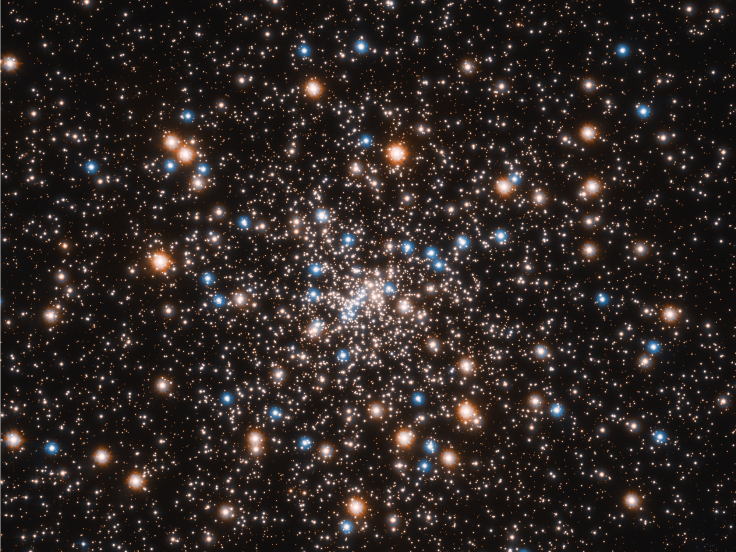Hubble Measures Exact Distance To Star Cluster Born Shortly After Big Bang

Around 13.8 billion years ago, our universe was nothing but a tiny pinprick. It came to existence after the events of the Big Bang and has been growing ever since. The ensuing events led to the formation of Milky Way and our tiny little world inside it, but what happened during the universe’s infancy still remains debatable.
This is why astronomers often try looking for some of the oldest objects in the cosmos. They have already found some, but a team using NASA’s Hubble Space Telescope has discovered a new way to accomplish the mission, and is already getting results out of it.
The group, according to a press release from the space agency, recently managed to measure the exact distance to a globular star cluster dubbed NGC 6397 for the first time. The stellar assembly, hosting some 400,000 stars, is located 7,800 light years away from Earth, according to the observations made with just 3 percent margin of error.
This, combined with sophisticated calculations, allowed them to pin the exact age of the cluster at 13.4 billion years or just a few million years after the Big Bang. According to NASA, the novel measurement method relies on trigonometry parallax, a technique where a tiny shift in an object’s position is noted (due to a small change in viewing angle; here Earth's movement around Sun) and used as a yardstick.
The method could help NASA, as well as other astronomers, detect some of the oldest space objects sitting beyond the boundaries of our galaxy with much ease. In fact, this is a major improvement over previous techniques that involved comparing luminosities and colors of stars from outside the plane of Milky Way with theoretical models or similar objects in our own solar backyard.
“The globular clusters are so old that if their ages and distances deduced from models are off by a little bit, they seem to be older than the age of the universe,” study lead Tom Brown, from Space Telescope Science Institute in Baltimore, Maryland, said in a statement. The previous method also came with at least 10-20 percent margin of error.
That said, high-precision results from the latest method could also help astronomers improve replicas of stellar models designed to study the characteristics of new and old stars, and their evolution.
“Any model that agrees with the measurements gives you more faith in applying that model to more distant stars,” Brown added. “The nearby star clusters serve as anchors for the stellar models. Until now, we only had accurate distances to the much younger open clusters inside our galaxy because they are closer to Earth.”
Moving ahead, astronomers could use this technique to peer deeper into the cosmos, and more specifically learn in detail about some 150 globular clusters, hosting swarms of oldest stars in the universe outside our galaxy. For NGC 6397, the measurement could get even more precise if the current data is combined with upcoming results from European Space Agency’s Gaia space observatory.
The findings of the observation have been published in a paper titled “A High-precision Trigonometric Parallax to an Ancient Metal-poor Globular Cluster” in the Astrophysical Journal Letters.
© Copyright IBTimes 2025. All rights reserved.




















